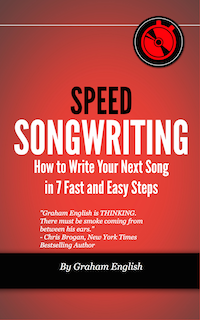
Melody is the heart of a song. It’s what sticks in people’s heads, what they hum in the shower, and what makes a song unforgettable.
But not all melodies are created equal. Some forms work better for certain moods, genres, or emotional impacts.
If you understand these six common melodic forms and how to use them, you’ll write better, catchier, and more emotionally compelling songs—faster.
1. The Stepwise Climb
Most people recognize this one instantly. It’s a melody that moves mostly by steps (notes right next to each other in the scale) rather than leaps.
Why it works: It’s smooth, easy to sing, and feels emotionally connected. It mimics natural speech patterns, making it an excellent choice for verses where you want a conversational feel.
How to use it:
- Stick to small intervals (seconds and thirds) for most of the melody.
- Use a few well-placed leaps to add emotional lift (but don’t overdo it).
- Let it rise gradually in pitch to build excitement or tension.
2. The Arch Shape
Picture a melody that starts low, climbs to a peak, and then comes back down—like an arch. This is one of the most balanced and satisfying melodic shapes.
Why it works: It creates a sense of journey and resolution. It mirrors natural human breath cycles, making it feel intuitive.
How to use it:
- Start lower and gradually climb over several bars.
- Reach the peak at a key emotional moment (the chorus or the climax of a phrase).
- Bring it back down smoothly so the listener feels resolution.
3. The Descending Line
A melody that starts high and falls downward creates a sense of finality, longing, or melancholy. This form is also common in blues and folk music, where it naturally conveys a storytelling vibe.
Why it works: It feels conclusive and emotional. It also makes room for dynamic instrumental fills or vocal embellishments.
How to use it:
- Use it in verses to create a sense of storytelling.
- Pair it with lyrics that reflect sadness, nostalgia, or reflection.
- Follow it with a contrasting rising melody for emotional contrast in a chorus.
4. The Static Melody
This one barely moves at all. It hovers around one or two notes with little variation.
Why it works: It creates tension and groove. It’s also extremely easy to sing, making it perfect for anthems and chant-like songs.
How to use it:
- Use it in a verse to create tension before a soaring chorus.
- Pair it with a strong rhythm section to keep the energy high.
- Contrast it with a melody that moves more in the next section for impact.
5. The Leap-and-Step
This one mixes large interval jumps with smaller stepwise motion. It’s unpredictable and attention-grabbing.
Why it works: It surprises the listener and adds an emotional punch. The big leaps feel dramatic, while the steps keep it grounded.
How to use it:
- Use a large leap to start a phrase and follow it with stepwise motion.
- Make sure the leaps make sense within the chord progression—too random, and it’ll feel disjointed.
- Save big leaps for emotional high points in the song.
6. The Call-and-Response Melody
A short melodic phrase is followed by another that answers it. This is foundational in blues, gospel, and soul music.
Why it works: It feels natural and conversational. It also invites listener participation—great for live performance.
How to use it:
- Write a short phrase and follow it with a similar phrase that either repeats, varies slightly, or contrasts.
- Use the “call” for a question or setup and the “response” for resolution.
- If writing for a group, make the response harmonized or layered.
Final Thoughts
Melodic forms aren’t rules—they’re tools. The best songwriters know how to mix and match them to fit the emotion and energy of a song. Start paying attention to which forms appear in your favorite songs. Try writing a melody using each one and see which feels the most natural for your style.
The fastest way to improve your melodies? Write more of them. Choose one of these forms and write a melody today. Don’t overthink it—just start singing or playing. The best ideas come from action, not hesitation.

Enter your first name and email address below and click “GET ACCESS NOW!” to get the Speed Songwriting Cheat Sheet delivered to your inbox!
We guarantee 100% privacy. Your information will not be shared.

Leave a Reply